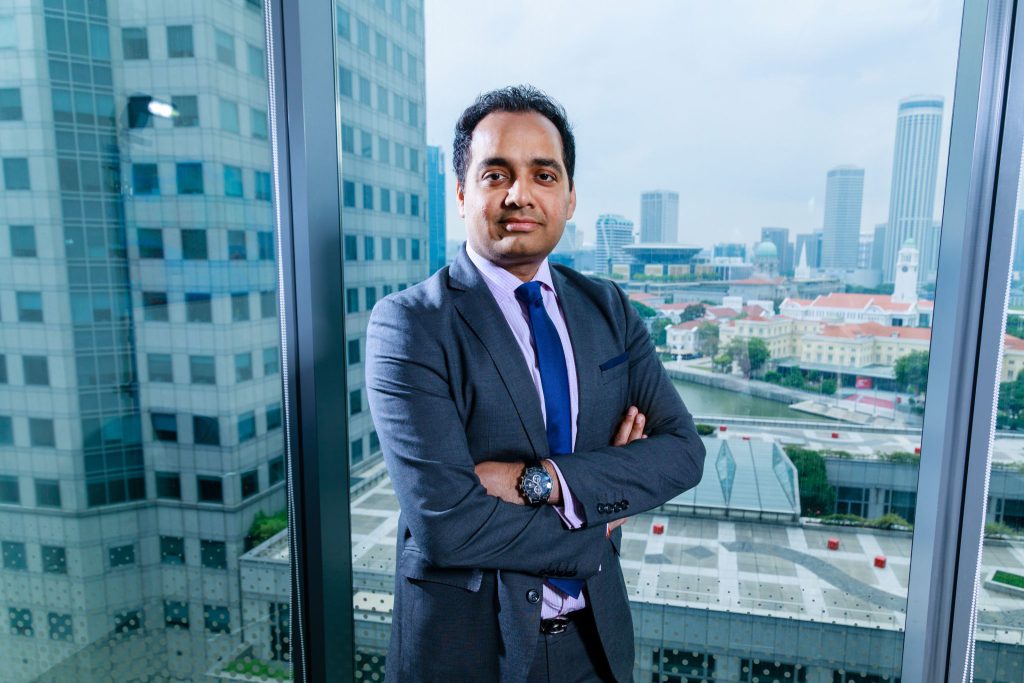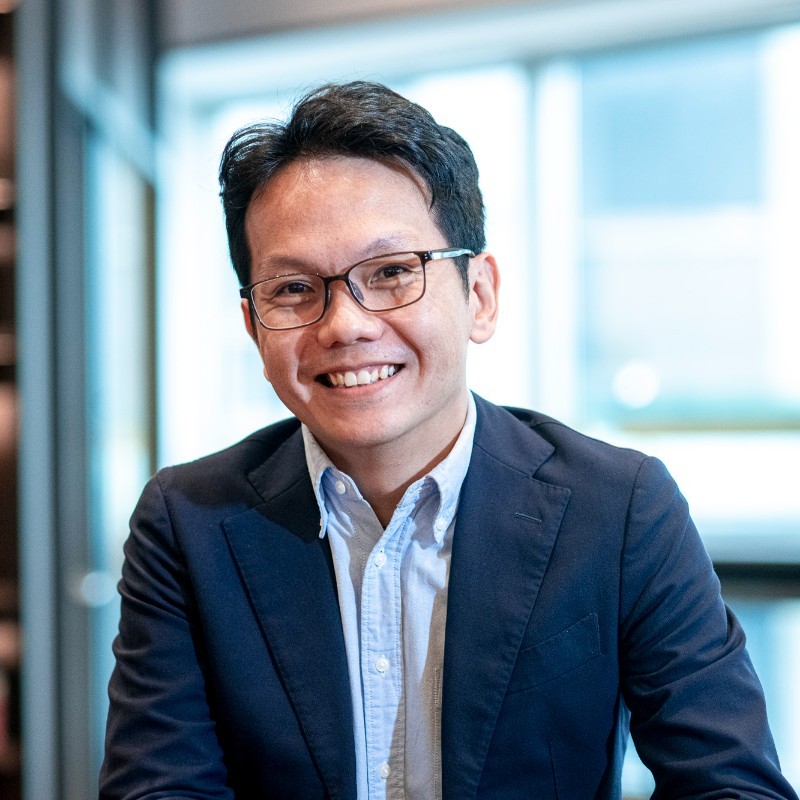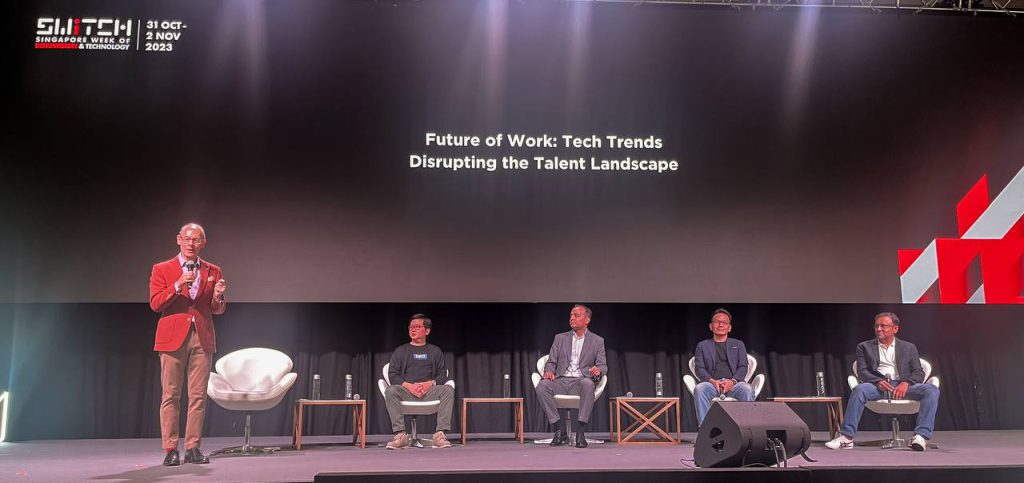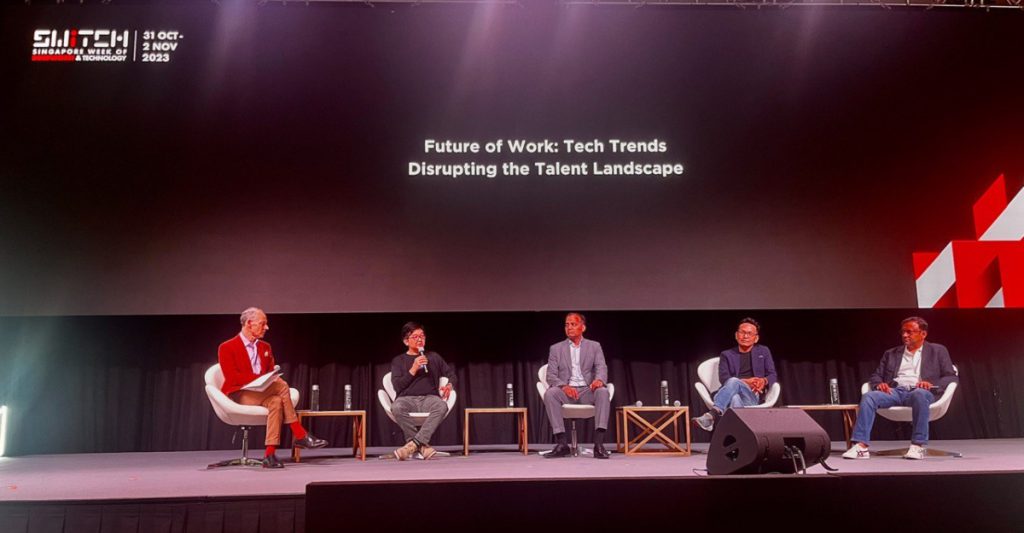In the aftermath of the COVID-19 pandemic, with the global economy still struggling, the prospect of rising interest rates and the threat of an expanding war in the Middle East pose grave dangers.
In Singapore, where the economy is projected to grow between 0.5 and 1.5 per cent this year, the global economic landscape adds further complexity as concerns of a possible recession grow.
Amidst this challenging economic backdrop, what are the talent acquisition and employment trends across the city-state? At the SWITCH 2023 conference earlier this month, industry leaders and recruitment firm executives shed light on the nuances of Singapore’s talent landscape.
Who’s hiring now?
Reflecting on the evolving market trends this year, Nilay Khandelwal, the Managing Director, Singapore, of recruitment firm Michael Page, highlighted that 2023 commenced with a degree of uncertainty.
While “some pick up” was seen across the months of July and August, the hiring landscape returned to a “flux situation” in September due to the Israel-Hamas war.
As a result, more businesses are looking to hire more selectively to ensure that their investment into talent pays off. A big part of a business’ operational expense consists of payroll, and at a time when profitability is of utmost importance, these businesses think “two, or even three more times” prior to hiring talent, according to Samir Khadepaun, the founder and CEO of Wizly.

However, Nilay acknowledges that it’s not all doom and gloom in the hiring landscape — many industries and job functions still continue to thrive despite these macroeconomic headwinds.
Take the tech industry, for example. While the industry has gone through its fair share of challenges over the past couple of years, job functions in tech like data science, machine learning, and cybersecurity still see robust demand as artificial intelligence (AI) and automation take the centrestage globally.
Industry-wise, Nilay views that core industries like the FMCG and healthcare industries are still doing well as consumer demand remains strong.
Echoing the same sentiments, Yeo Puay Lim, the Commercial Director of Glints, adds that the recruitment platform saw an increase in hiring for revenue-generating roles as a “direct implication of the change in the macroeconomic environment and a heightened awareness and focus on profitability”.
“Sales, business development, and marketing roles are very much in focus for many businesses and startups,” he says.
The post-pandemic state of work
Beyond these changes in the hiring landscape, these economic uncertainties and the technological advancements during the pandemic has also brought about a seismic “shift in mindset” when it comes to the global state of work.
Citing a survey that Michael Page carried out earlier this year, which collected data points from about 71,000 individuals, Nilay points out that “the loyalty factor in the job market has definitely lost its lustre”. Job seekers are less likely to be company-first when it comes to their career, especially as the workforce undergoes rapid changes due to the advancement of technology.
92 per cent of people today are open to hearing about an opportunity, as opposed to the 50 to 60 per cent of people prior to the pandemic — it’s about the mindset of trying new things.
COVID-19 forced people to get away from their social networks that were largely built in their offices and create social connections outside of their workplace. People are now not very attached to their workplace as a concept.
– Nilay Khandelwal, Managing Director, Singapore, Michael Page
Even in “tough” job markets like Japan, where the majority of employers face hiring difficulties due to the shortage of talent and the Japanese culture of lifetime employment, 72 per cent of Japanese workers have indicated that they are now open to new opportunities post-pandemic.

Aside from this, Puay Lim views that the pandemic has also “normalised the idea of remote work”, a concept which was born out of necessity as a result of worldwide lockdowns.
What we realised in the course of serving our clients and making the transition from pre-pandemic to post-pandemic is that the pandemic, in a very positive way, created acceptance and the normalisation of working across borders and on a remote basis. There is no longer a real distinction — someone could be working the same job from one side of Singapore or remotely from cities like Jakarta.
– Yeo Puay Lim, Commercial Director, Glints
By tapping into a larger talent pool, businesses get to overcome the hurdles of talent scarcity while simultaneously benefiting from increased cost-effectiveness. Employees and jobseekers, on the other hand, are able to expand their professional horizons across borders through flexible work arrangements.
This symbiotic relationship is beneficial for the most part. However, Puay Lim notes that remote work also has its downsides, especially when it comes to employee engagement.
An employee’s association with the workplace directly correlates with their sense of engagement at work. The trend of remote working is pushing workers to become less engaged and disassociated over time, impacting both organisational performance and innovation.
The rise of hybrid work arrangements and fractional hiring
As the world enters a post-pandemic environment, Puay Lim shares that he sees both job candidates and employers seeking for greater engagement in the workplace, contributing to the rise of hybrid working arrangements and co-location.
It’s actually a growing trend. The job landscape is not entirely swinging back to the pre-pandemic norms of a 100 per cent work-from-office setup. Instead, we see this shift towards this concept of ‘remote but not quite remote’ working arrangement.
– Yeo Puay Lim, Commercial Director, Glints
To tap into global talent pools while retaining employee engagement, companies are now looking to set up “specific sites” across cities like London, Jakarta or even Bali, rather than employing a geographically dispersed workforce.
“These “specific sites” permit the possibility of hybrid work, allowing companies to extend the option of flexibility, but also creating the possibility of returning to the shared site, perhaps two or three times a week to build engagement,” adds Puay Lim.

Another growing trend in the job landscape is the rise of fractional hiring. Employees with a fractional contract provide their expertise across diverse fields to companies on a project-by-project basis.
These employees typically offer highly specialised services and skills, and often work for multiple clients simultaneously.
For instance, mums who have not worked for a long period of time due to kids and other commitments but have amazing work experience can now be hired for impactful roles through fractional hiring contracts.
Fractional hiring is very much different than a part-time role or a consultant because we hire someone with specific expertise in a field, such as a Chief Marketing Officer, to complete a specific project in a specific amount of time.
– Samir Khadepaun, Founder and CEO, Wizly
According to Samir, fractional hiring is currently a huge trend across the United States and Europe. These employees offer a flexible, cost-effective option to businesses who need special expertise, but lack the resources to afford full-time staff.
The global talent pool is a “double-edged sword”

Ultimately, these concepts — “remote but not fully remote” working arrangements and fractional hiring — point towards the rise of a global talent pool.
However, this global talent pool can also prove to be a “double-edged sword”, according to Albert Liew, Managing Director, Singapore and IndoChina, as it creates increased competition for jobseekers.
Candidates now have a lot more choices, and I’m not just talking about choices that you see in Singapore. Jobseekers can now tap into opportunities based in various other countries such as Vietnam and Thailand, but this also means that employers have more options as well, which means that you would truly need to stand out as a candidate to be hired.
On the flip side, [jobseekers] are only as faithful as their options. With plenty of opportunities across borders, companies will then face problems when it comes to retention and engagement.
– Albert Liew, Managing Director, Singapore and IndoChina, BIPO
The future of work
The hiring landscape is set for more disruptive changes in the near future with the rise of AI. With external tools like ChatGPT, Samir views that companies can achieve growth and success at much faster rates by allowing companies to identify “the right job functions” and hire the “right employees” from the outset.
“AI tools like ChatGPT can help in the prediction of what kind of job functions can work better for your company, and identify candidates who are suitable for these roles. This can save companies tonnes of time — wrong job descriptions lead to the wrong hire, leading to a waste of resources and time,” he explains.
Aside from this, AI can also be a useful tool for upskilling employees. For instance, these tools can be used to identify the employees that require upskilling and recommend the right topics to bolster them with industry-specific knowledge based on their performance at a company.
The impacts of AI also extend beyond the realms of HR into the operational aspects of a company.
Today, a company valued at US$100 million would have between 250 and 400 employees, depending on the industry. However, Samir predicts that this number can easily be cut down by 30 to 40 per cent in the coming years with the integration of AI.

While there are many ways to utilise AI tools to gain an advantage in the hiring landscape whether as a business or as an employee, a concerning trend that Nilay has observed across the region is the use of these tools to create artificial CVs that mirror the job description of an open role.
By using generative AI to create these CVs, an individual can look like the perfect hire, but only on paper. In reality, though, the individual is a mismatch and it creates difficulty for [recruitment firms like Michael Page] to identify suitable candidates for their clients.
– Nilay Khandelwal, Managing Director, Singapore, Michael Page
On the flip side, companies that deploy generative AI tools in their hiring processes might make biased assessments when it comes to selecting the right candidate to fill roles within the company.
AI systems learn to make decisions based on training data, which can include biased human decisions. As a result, these biases can creep into algorithms across areas such as race, gender or disability status.
Tech giant Amazon faced a similar issue five years ago, when it discovered that the AI tool it developed to sort through mass applications penalised resumes that indicated women or women-related terms.
Apart from bias, the tendency of these AI tools to produce or “hallucinate” fake information can be a problem when it comes to HR functions such as payroll generation, according to Albert. “These technologies are not really viable solutions in the hiring landscape — ChatGPT can probably only guide employers 80 per cent of the way,” he says.
Despite these risks associated with AI, it’s important to remember that the technology is still in its early stages. AI is set to create a new generation of work trends and disrupt the hiring landscape, hence, it’s vital for both jobseekers and companies to stay up-to-date with these trends to harness its benefits.
Featured Image Credit: Vulcan Post
Also Read: From local to global: Startup execs share insights on international expansion and innovation










